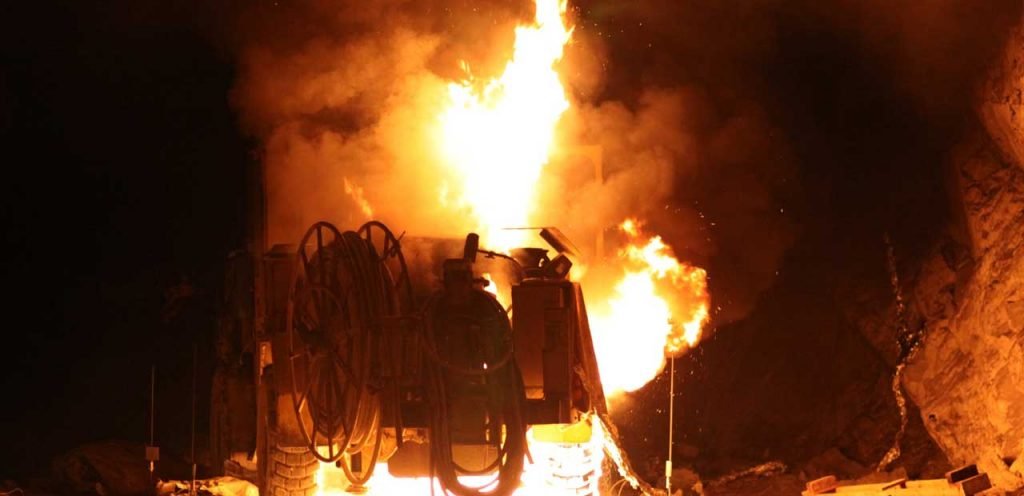Fires are a harsh reality of working in a mine. That’s because many hazards, mechanical machinery and chemicals are involved in extracting materials from a mine.
While fires may be common in mines, having a proper fire and safety training plan in place can help protect your employees. It can also help keep your operations safe from destruction. Effective emergency planning is essential for reducing the cost and impact during a fire.
To help you operate your mine safely, let’s take a deep dive into a few fire and safety training tips. That way, you can make sure that everyone is protected at all times.
Reduce or Eliminate Workplace Fire Hazards
Your worksite setup should keep fire protection design in mind. While it’s true that you may not be able to eliminate mining fire hazards from the worksite, there are steps you can take to design the area so that it doesn’t create the likelihood of a fire being started.
The key to keeping your mind free from fires is to recognise fire hazards. You need to be aware of potential hazards and places where fires could start in your mind ahead of time so that you can remove them.

- Look for Faulty Wiring: Keep an eye out for faulty wiring. There’s a lot of heavy machinery that is used in a mining operation, and with that comes plenty of potentials for electrical hazards to arise. The moment you see a potential electrical hazard, make sure to report it or remove it.
- Don’t Overload Outlets: Another important fire prevention tip is not overloading circuits, outlets and extension cords. It may be tempting to do so to accomplish a task when there isn’t a lot of power outlet space available. However, this can lead to dangerous short circuit fires.
- Throw Away Damaged Cords: On the subject of electrical cords, the moment you spot a damaged cord it needs to be removed and reported. Damaged electrical cords, frayed wires and exposed wiring can all lead to fires in the mine.
- Store Flammables Safely: Flammable materials abound in mining operations. However, these won’t cause fires if they’re properly stored. Keeping them in fire suppressing cabinets can prevent them from spontaneously combusting. Plus, keeping them away from electrical equipment or locations where a spark might start can prevent fires.
Monitor Fire-Prone Areas
There are some areas of the mine that are more fire-prone than others. These are typically related to areas where there are large amounts of chemicals or electrical equipment.
In these spaces, you need to be careful of fire hazards at all times. Properly storing equipment, chemicals and materials in these areas can help prevent fires from starting when you’re not expecting them.
On top of that, areas that are especially fire-prone should have additional protocol and training. Make sure all electrical equipment is cleaned up and chemicals are sealed after use to prevent fires from starting in the mine.
Mark Emergency Exits and Keep Them Clear
You never know when an emergency is going to arise. Because of that, you need to make sure that you have well-lit exits and functioning emergency lighting in place. This helps guide workers out of the mine in case a fire does start.
You also need to make sure that your employees are keeping exits to the mine clear of debris. Post emergency exit diagrams around the job site so that employees know exactly what to do in case of an emergency.
Keeping trash out of exit pathways and properly training employees can mean preventing serious injuries or even deaths on the job. That makes it an extremely critical part of safe mine operations.
Maintain Fire Suppression Systems and Extinguishers
A fire suppression system is critical to keeping fires at bay. This is especially true in mining operations. You should be regularly testing your fire prevention systems and conducting routine maintenance to ensure they are working correctly.
You also want to make sure that you have fire extinguishers around the job site. Fire extinguishers can help prevent smaller fires and keep people safe. Every six months, inspect the extinguishers and make sure that they are not expired or inaccessible to employees.
By properly maintaining your mine’s fire suppression equipment, you’ll be in good shape for keeping your mine fire-free. And, you’ll make sure that you’re taking every possible step to put out fires in case any emergency does arise.
Train Your Employees in Fire Safety
The most important parts of a fire safety plan are having a proper fire protection design and fire safety training. It might seem tedious to practice evacuation routines, but you never know when a fire might arise.
Create an evacuation and fire safety plan and make sure that all your employees are aware of it. Assign roles during the evacuation to make sure that it runs smoothly and have your team practice a fire evacuation.
You should be practicing regular fire drills and ensuring that they meet industry standards. Be sure to post-fire safety information and plans around the worksite so that employees can regularly check in on these plans and stay informed, too.
If you need assistance with creating a fire safety plan or training your team on fire safety, working with a fire prevention team can help.

